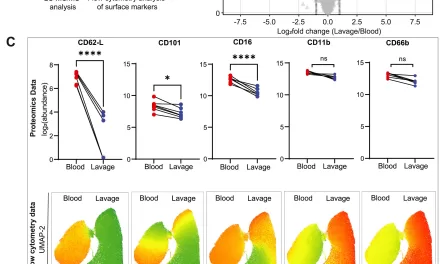A recent study has shown that a single 30-minute session of aerobic exercise, such as jogging, can significantly improve glucose metabolism and insulin sensitivity in young adults. The findings highlight the immediate metabolic benefits of even brief bouts of physical activity, underscoring its potential role in reducing the risk of type 2 diabetes (T2D) and cardiovascular disease.
Key Findings
In a study involving 32 healthy young adults, researchers observed a remarkable reduction in both fasting and post-load glucose levels the day after a 30-minute jogging session. These participants, with a mean age of 35, included both sedentary and moderately active individuals, representing a mix of normal-weight and marginally overweight men and women. The exercise intervention led to a drop in 1-hour post-load glucose levels from 122.8 mg/dL to 111.8 mg/dL (P = .03).
Insulin levels also decreased significantly after exercise, with post-load insulin levels dropping from 57.4 IU/mL to 43.5 IU/mL (P = .01). Improved insulin sensitivity was demonstrated through surrogate indices such as the Matsuda index and the oral glucose insulin sensitivity (OGIS) index, both showing significant increases. Insulin resistance, as measured by the homeostasis model assessment (HOMA), decreased as well (P = .04).
Although there was a trend toward improved beta-cell function, as suggested by a nonsignificant rise in HOMA-B, the overall results point to significant metabolic improvements after just one session of aerobic exercise.
Methodology
The researchers conducted an oral glucose tolerance test (OGTT) twice: once following at least four days of inactivity, and a second time the day after a 30-minute outdoor jog. Energy expenditure and exercise intensity were monitored with a metabolic holter during the session to ensure consistency. The participants refrained from additional physical activity outside of the study sessions, allowing for clear analysis of the exercise’s impact.
Implications for Type 2 Diabetes Risk
The study reinforces the importance of physical activity in maintaining glucose control, even in young and healthy individuals. The improvement in 1-hour post-load plasma glucose suggests that regular aerobic exercise, even in small amounts, can have a direct effect on reducing the risk of developing T2D. The researchers also noted potential cardiovascular benefits from lowered glucose and insulin levels.
“Improvement in 1-hour post-load plasma glucose following a single session of aerobic physical activity suggests that exercise could have a direct effect on T2D risk and cardiovascular risk,” the authors wrote in their study, published in the Journal of Endocrinological Investigation.
Study Limitations
While the findings are promising, the study’s relatively small sample size may limit the generalizability of the results. Additionally, C-peptide levels, which could have provided further insights into insulin secretion, were not measured. Nonetheless, the significant impact of a single exercise session on glucose and insulin levels highlights the immediate benefits of physical activity.
Conclusion
This study emphasizes the value of incorporating even brief aerobic exercise sessions into daily routines, particularly for those concerned about metabolic health. By reducing glucose levels and improving insulin sensitivity, regular physical activity can be an effective strategy for preventing chronic conditions like T2D. Further research with larger sample sizes could help solidify these findings and explore additional biomarkers for a more comprehensive understanding of exercise’s impact on metabolic health.
Source: The study was led by Simona Moffa from the Fondazione Policlinico Universitario Agostino Gemelli IRCCS in Rome and Gian Pio Sorice from the Università Degli Studi di Bari “Aldo Moro” in Bari, Italy. It was funded by grants from the Università Cattolica del Sacro Cuore, and the authors declared no conflicts of interest.












